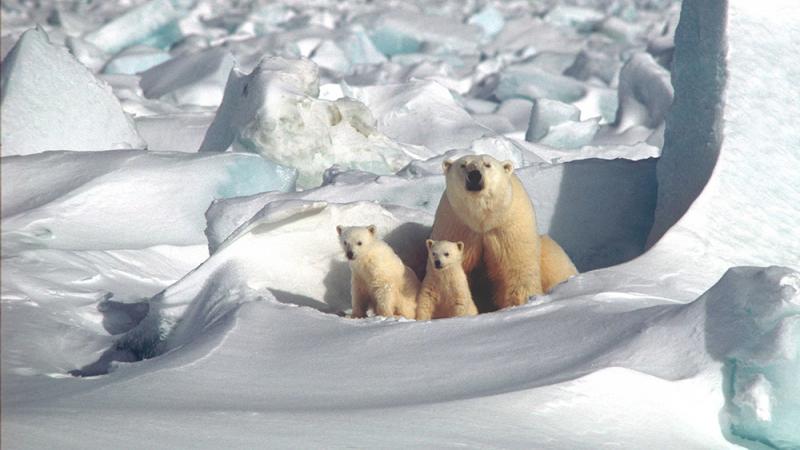Zoo-aided study sheds new light on polar bears in Arctic

Study published in Science shows bears' metabolic rates to be higher than predicted
A new study on polar bear metabolism, published Feb. 1 in the journal Science, sheds light on the energy demands of this iconic Arctic predator. The important takeaway? For some populations of polar bears, it's worse than we thought.
The study, which got a boost from the Oregon Zoo in its early stages, found that polar bears have metabolic rates greater than previously predicted and greater than other terrestrial mammals of similar size. The new research reinforces the understanding that polar bears are reliant on a diet of fat-rich seals to survive in the energetically demanding Arctic.
"Bears that were more active and moved greater distances had higher energy demands than less active bears," said Anthony Pagano, a wildlife biologist with the U.S. Geological Survey and one of the study's leaders. "As a result, bears showed remarkable fluctuations in body mass based on their foraging success, emphasizing the feast-or-famine lifestyle of these animals."
As Arctic sea ice diminishes and becomes more fragmented, the research suggests, it will further affect the energetic balance of these mega-predators both by reducing their access to prey and increasing the caloric cost of their travel.
The Oregon Zoo played a key role in helping Pagano and his fellow researchers prep for the study.
"Scientists and wildlife managers need to understand how polar bears are responding as sea ice retreats," said Amy Cutting, who oversees the polar bear area at the Oregon Zoo. "Some aspects of bear biology are virtually impossible to study in the wild, which is where zoo bears come in."
In 2013, the zoo's female polar bear Tasul beta-tested a high-tech collar. Once USGS scientists calibrated it to her movements, similar collars could be placed on free-roaming bears in the Arctic, enabling researchers to monitor the bears' behavior without having to observe them directly. The collars also gave scientists a chance to get a bear's-eye view of these mega-predators' life on the sea ice by attaching a small camera to them.
"There's a lot we need to learn about how climate change is affecting polar bears," Cutting said, "so it's very rewarding to know we offered conservation scientists a chance to study this threatened species in a new way."
Cutting envisions more contributions to conservation science once the zoo's new polar bear habitat, Polar Passage, opens in 2020. The zoo plans to break ground on the new space in late spring.
Polar Passage is one of eight major projects made possible by the community-supported zoo bond measure passed in 2008. With five of these projects now complete, the final three — improved habitats for primates, rhinos and polar bears — will be managed as a single construction project to save construction costs and increase efficiency.
The project — part of the U.S. Geological Survey's Changing Arctic Ecosystems research on the effects of climate change on polar bears — was a collaborative effort led by the USGS and the University of California, Santa Cruz, with contributions by the San Diego Zoo, the Oregon Zoo, Washington State University and Polar Bears International.
More News

Rescued cougar cubs are venturing out
A pair of orphaned cougar cubs, rescued and brought to the zoo by Washington Department of Fish and Wildlife staff in November, have begun exploring their outdoor habitat.April 17, 2025

Zoo seeks pika watchers for summer season
The Oregon Zoo is recruiting volunteers for Cascades Pika Watch.April 15, 2025

Zoo convenes action for imperiled elephants
Sabah government representatives joined conservation NGOs, local communities, palm oil producers, and tourism operators this week in the fight to save the world’s smallest elephants from extinction.April 11, 2025

